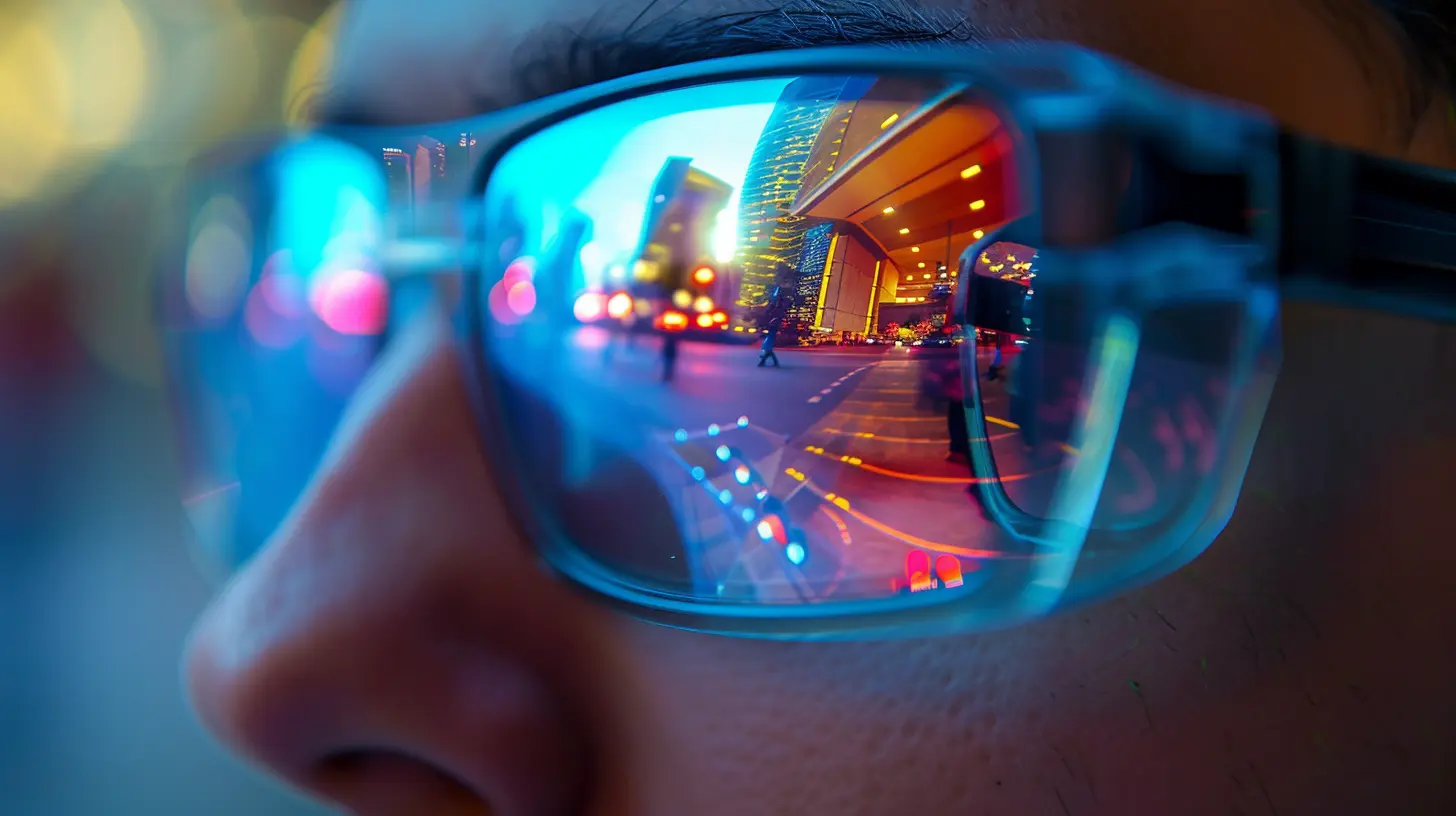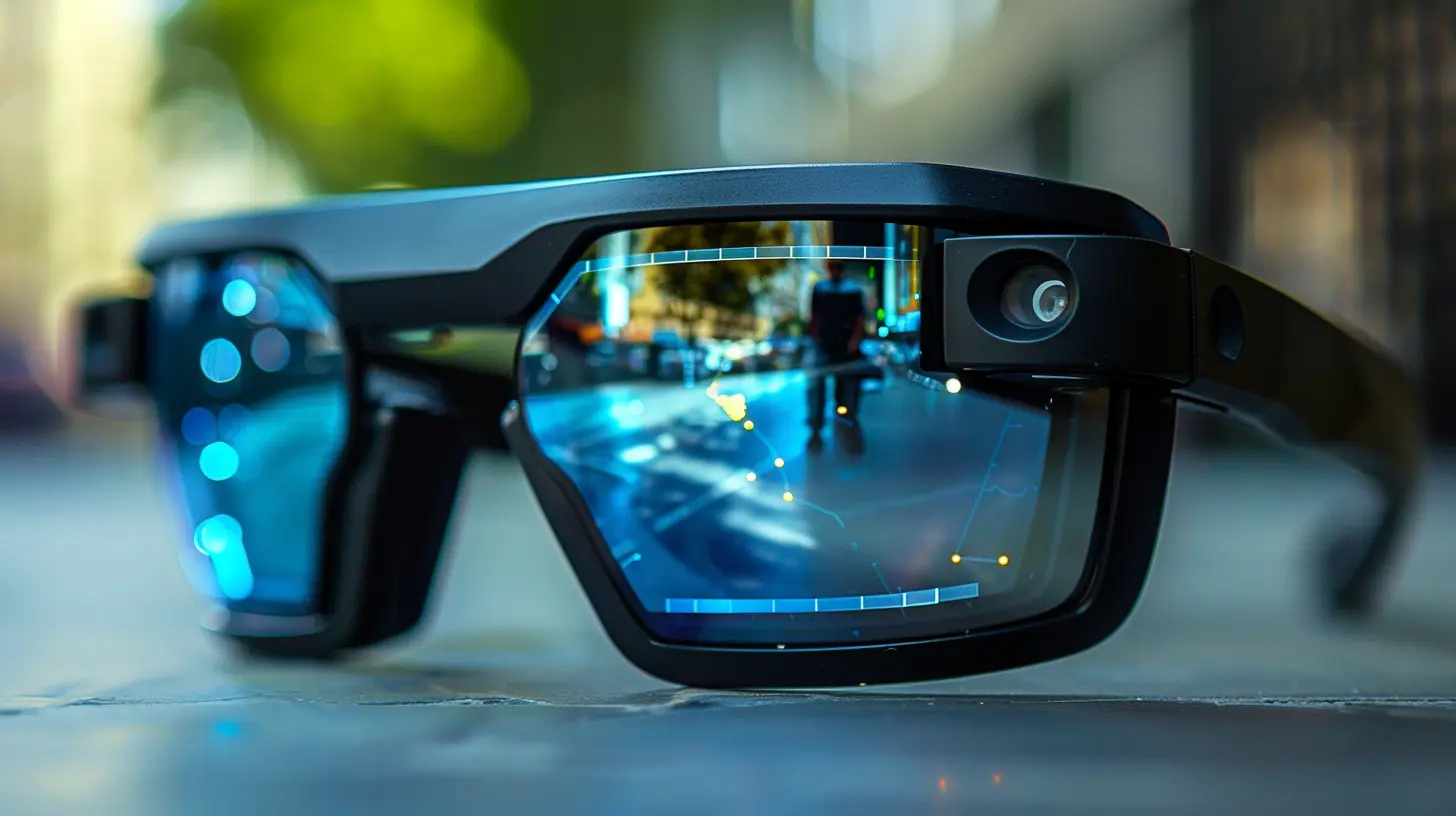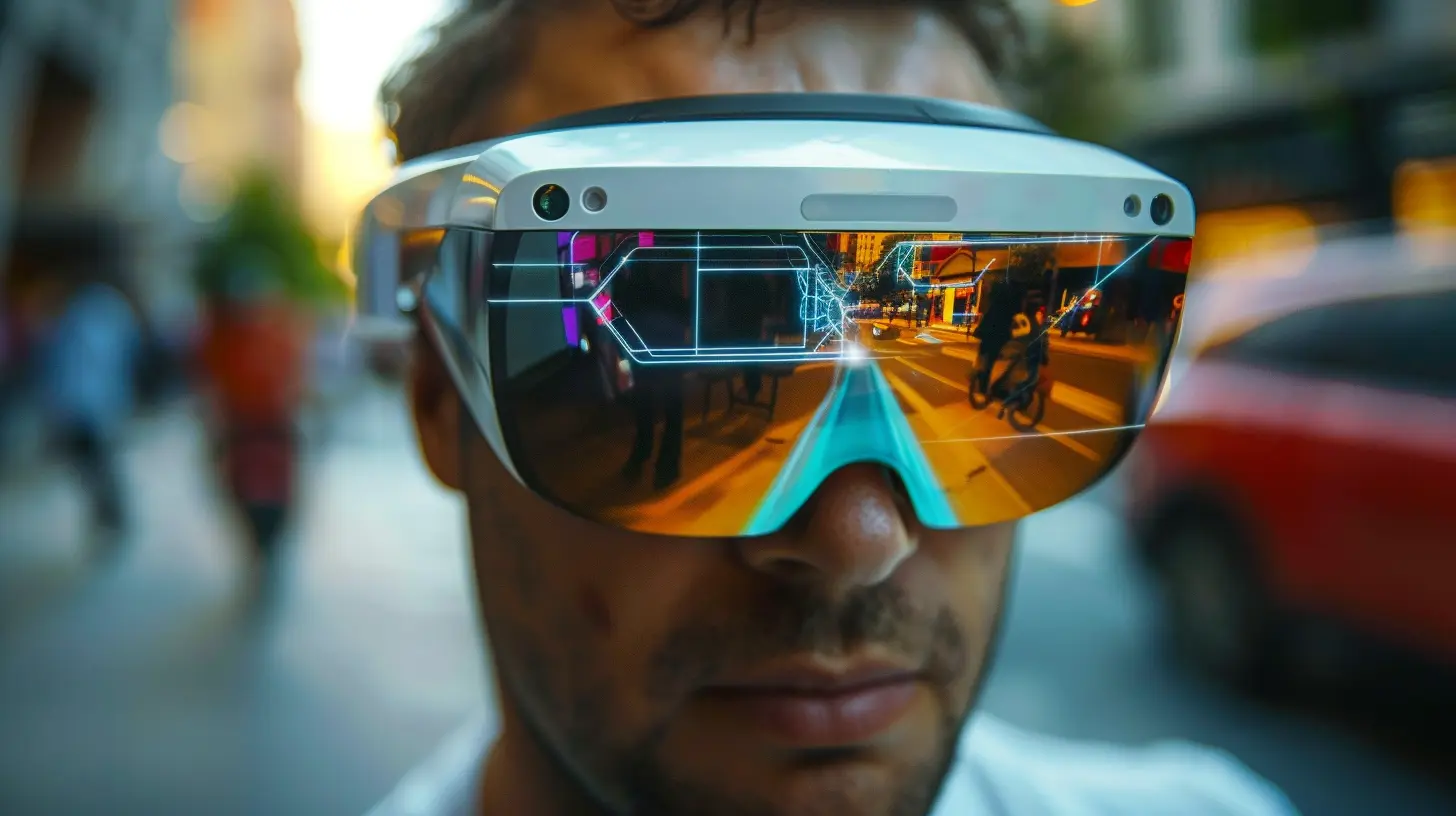The Intersection of Augmented Reality and Smart Glasses
17 October 2025
Technology has been evolving at lightning speed, and two of the most exciting fields in recent years are Augmented Reality (AR) and Smart Glasses. It feels like we're living in a sci-fi movie, right? I mean, who would have thought that one day we’d be able to wear glasses that project digital objects into the real world? Yet, here we are — with AR and Smart Glasses merging to create mind-blowing experiences.
But what exactly happens when these two futuristic technologies intersect? How close are we to having AR-powered glasses as common as smartphones? Let’s dive into the fascinating world of AR and Smart Glasses, and see where this all leads us.

What is Augmented Reality (AR)?
Before we get into how AR and Smart Glasses work together, let’s first define what AR is. You’ve probably heard of Virtual Reality (VR), where you immerse yourself in a completely digital world. AR, on the other hand, blends digital elements with your physical surroundings. Think of it as a layer of digital magic overlaid on top of real life.For example, imagine walking down the street and seeing virtual signs, messages, or even digital creatures that interact with your environment. That’s AR in action. It’s taking what’s real and enhancing it with computer-generated content.
Unlike VR, which isolates you from the real world, AR keeps you grounded in reality while adding extra layers of information. It's like having a digital assistant whispering in your ear or pointing out things that only you can see. Pretty cool, right?

What Are Smart Glasses?
Now, let’s talk about Smart Glasses. These are wearable devices that look and function like regular glasses, but with a tech twist. They can overlay information, record videos, play music, make calls, and even access the internet. Sounds futuristic, doesn’t it?Some of the earliest versions of Smart Glasses, like Google Glass, didn’t quite catch on with the public, but they set the stage for what’s possible. Today, we have more advanced versions like the Microsoft HoloLens and the Vuzix Blade, which are designed for both everyday users and specialized industries.
But here’s the thing: while Smart Glasses can do a lot of cool stuff, they become even more powerful when combined with AR.

How AR and Smart Glasses Work Together
Let’s imagine you’re wearing a pair of AR-enabled Smart Glasses. You’re walking through a museum, and instead of reading a plaque next to a painting, information about the artwork appears right in front of your eyes. Or maybe you’re cooking dinner, and a virtual chef is guiding you step-by-step, showing you exactly how to chop those onions.That’s the magic of AR-powered Smart Glasses. They allow you to interact with the world in ways that weren’t possible before. You’re not just looking at a screen anymore; you’re seeing digital content seamlessly integrated into your environment.
Here’s a breakdown of how they work together:
- Sensors and Cameras: Smart Glasses are equipped with sensors and cameras that capture the environment around you. This allows the glasses to understand your surroundings and place digital objects in the right spots.
- Display Technology: AR uses projection technology to overlay digital content onto the lenses of the glasses. This way, you can see both the real world and virtual objects at the same time.
- Processing Power: The glasses have tiny computers built-in that process all the data in real time. This ensures that the digital content reacts to your movements and changes in your environment.
- Connectivity: Most Smart Glasses connect to your smartphone or the internet to pull in information, making the experience more dynamic and personalized.

Real-World Applications of AR-Enabled Smart Glasses
Okay, now that we know how AR and Smart Glasses work together, let’s talk about what they can actually do. Spoiler alert: the possibilities are endless.1. Entertainment and Gaming
Imagine playing a video game where the characters interact with your living room furniture. AR glasses can turn your surroundings into a battlefield, playground, or even a puzzle-solving environment. Games like Pokémon Go gave us a taste of AR on our phones, but AR glasses take it to the next level by fully immersing you in the game world.2. Work and Collaboration
AR Smart Glasses are also revolutionizing the workplace. Imagine being a surgeon and seeing a 3D diagram of a patient’s anatomy right before making an incision. Or being an engineer and receiving real-time instructions while assembling a complex machine. These glasses are helping professionals in fields like healthcare, construction, and design work more efficiently and accurately.3. Navigation
Ever get lost in a new city? AR Smart Glasses can project directions right into your field of view, so you don’t have to keep looking down at your phone. You’ll see arrows guiding you to your destination, points of interest highlighted, and even restaurant reviews pop up as you walk by.4. Shopping and Retail
Shopping is another area where AR Smart Glasses can shine. Imagine walking into a store and instantly seeing product details, reviews, and price comparisons without having to touch your phone. Or better yet, trying on virtual clothes or makeup before you buy them. This could completely transform how we shop online and in physical stores.5. Education
AR Smart Glasses can also enhance learning. Imagine studying history and having historical events play out in front of you, or learning about the solar system with planets orbiting around your head. This kind of interactive learning could make education more engaging and effective.6. Accessibility
For people with disabilities, AR Smart Glasses can be a game changer. They can provide audio descriptions for the visually impaired, translate sign language in real-time, or even offer language translation for travelers. This technology is breaking down barriers and making the world more accessible to everyone.Challenges of AR-Enabled Smart Glasses
Of course, no technology is without its challenges, and AR Smart Glasses are no exception.1. Battery Life
One of the biggest issues right now is battery life. With all the sensors, cameras, and processing power packed into these glasses, they require a lot of energy. This means they either need to be bulky to house a large battery or have limited battery life. Neither option is ideal, but companies are working hard to improve this.2. Privacy Concerns
Another major challenge is privacy. Smart Glasses with cameras can record everything around you, which raises concerns about surveillance and data collection. How do you balance the cool factor of wearable tech with the need to protect people’s privacy?3. Design
Let’s be honest: nobody wants to wear a pair of glasses that look like they belong in a sci-fi movie (unless you’re really into that aesthetic). The glasses need to be stylish and comfortable if they’re going to gain widespread adoption. Companies are already working on sleeker designs, but we’re not quite there yet.4. Cost
Right now, AR Smart Glasses can be pretty pricey, making them out of reach for most consumers. As with any new technology, though, prices will likely come down over time as the technology improves and becomes more widely available.
The Future of AR and Smart Glasses
So, what does the future hold for AR and Smart Glasses? Well, it’s looking pretty bright. As the technology continues to improve, we’re likely to see more advanced features, longer battery life, and better designs.In the next few years, we could see AR glasses becoming as common as smartphones. And who knows? Maybe one day, we won’t even need phones at all. We’ll just be able to look through our glasses and see the digital world blended with reality.
Just imagine walking down the street and seeing virtual billboards, interacting with holograms, or even attending virtual meetings that feel like real-life interactions. The possibilities are truly endless.
Conclusion
The intersection of Augmented Reality and Smart Glasses is paving the way for a future that feels like something out of a science fiction novel. These technologies have the potential to change how we work, play, learn, and experience the world around us. While there are still challenges to overcome — like battery life, design, and privacy concerns — the future looks incredibly promising.We’re on the brink of something revolutionary, and it’s only a matter of time before AR-enabled Smart Glasses become a part of our everyday lives. So, keep your eyes peeled (pun intended). The future is closer than you think.
all images in this post were generated using AI tools
Category:
Technology InnovationAuthor:

Pierre McCord
Discussion
rate this article
1 comments
Ariadne Morales
Exciting times ahead! Augmented reality and smart glasses are shaping a future filled with endless possibilities!
October 17, 2025 at 4:03 AM

Pierre McCord
Thank you! The potential of augmented reality and smart glasses is indeed transformative, and I'm excited to explore these possibilities further!


